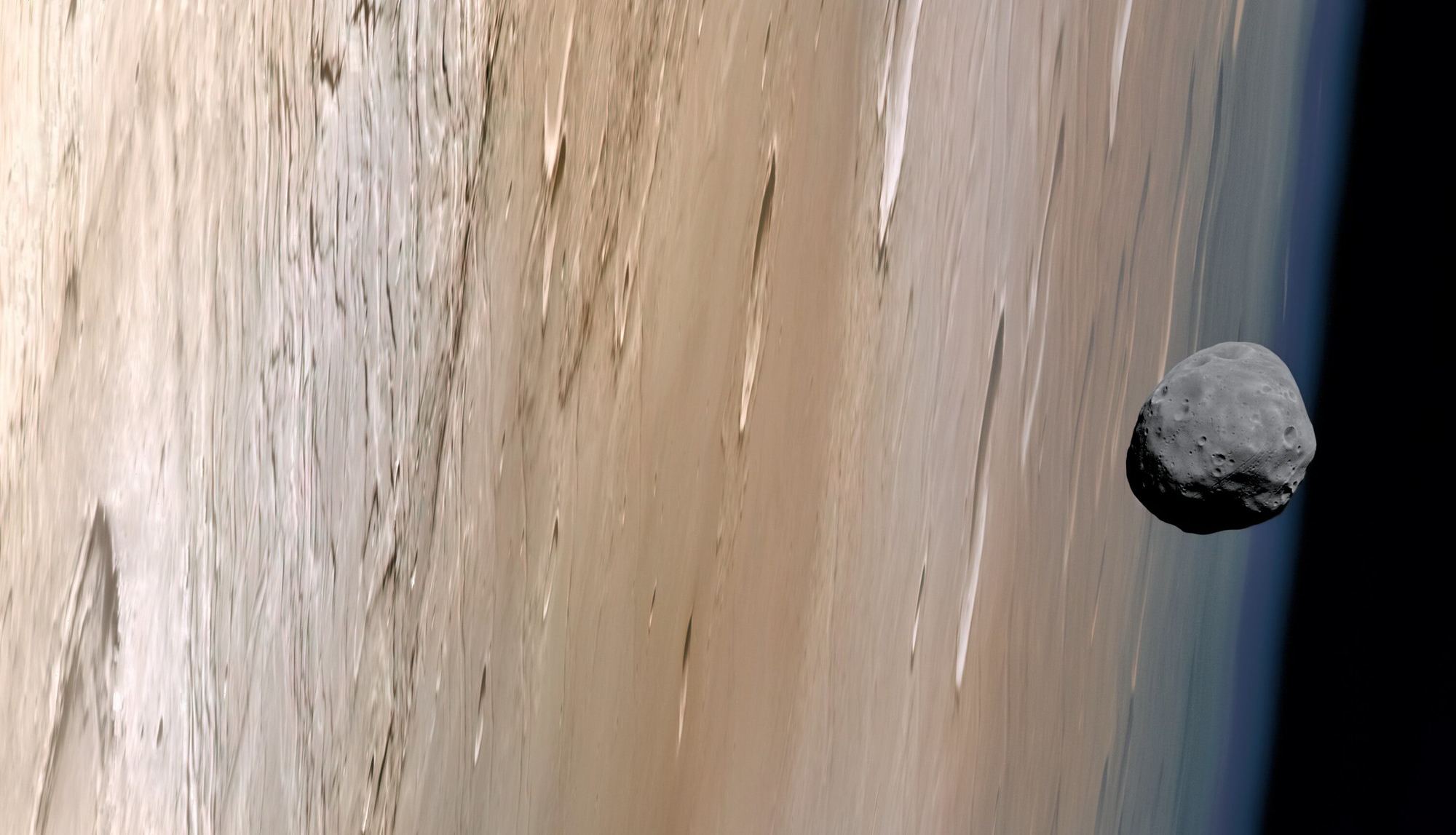
JUNE 4, 2024 BY EVAN GOUGH
Collected at : https://www.universetoday.com/167262/how-mars-moon-phobos-captures-our-imaginations/
For a small, lumpy chunk of rock that barely reflects any light, Mars’ Moon Phobos draws a lot of attention. Maybe because it’s one of only two moons to orbit the planet, and its origins are unclear. But some of the attention is probably because we have such great images of it.
Phobos is the largest of Mars’ two moons, the other one being Deimos. Scientists are uncertain about their history. They could be a pair of captured main-belt asteroids, two lobes of what once was a binary asteroid until capture separated them, or a second-generation object formed after Mars had already formed. Or they could be surviving fragments from an ancient collision between more massive objects.
Phobos isn’t very large. It’s about 26 km × 23 km × 18 km and not massive enough to be rounded. Studies of its density show that it’s a rubble-pile body loosely held together by its own gravity.
When the ESA launched its Mars Express Orbiter in 2003, its mission was to study Mars. One of its instruments is the High-Resolution Stereo Camera, a German contribution that produces colour images with up to two meters resolution. The instrument also has a black-and-white mode, and the original image of Phobos was black-and-white.
Andrea Luck is a skilled image processor from Glasgow, Scotland, with a healthy enthusiasm for space images. He decided the original B&W image, which he describes as epic, needed to be updated to colour. “I was kinda tired of seeing this epic photo online only in black and white, so I decided to jazz it up with some colours!” he wrote on his Flickr page.
It’s interesting to note that it’s a single image, not a composite.
Here’s the original B&W image.

The HRSC’s mission is to take stereographic images of Mars’ surface, capturing geological and morphological details. The goal is to map as much of the surface as possible. But at the bottom of its list of objectives are images of Phobos and Deimos.

Images of Phobos have helped scientists better understand the odd moon, but they’re not enough to reach solid conclusions. Fortunately, a mission to Phobos and its sibling Deimos will be launched in a couple of years.
JAXA, the Japan Aerospace Exploration Agency, is launching the MMX mission in 2026. MMX stands for Martian Moons Exploration. Its goal is to understand the origins of Phobos and Deimos. MMX will also return a sample from Phobos in 2031. Once in Earthly labs, those samples should reveal a lot.
But for now, we can enjoy this processed image of Phobos, which captures its nature as a fast-moving, rubble-pile moon with uncertain origins.

Leave a Reply